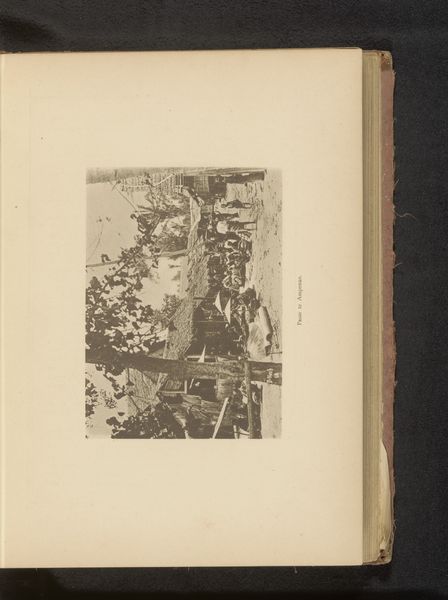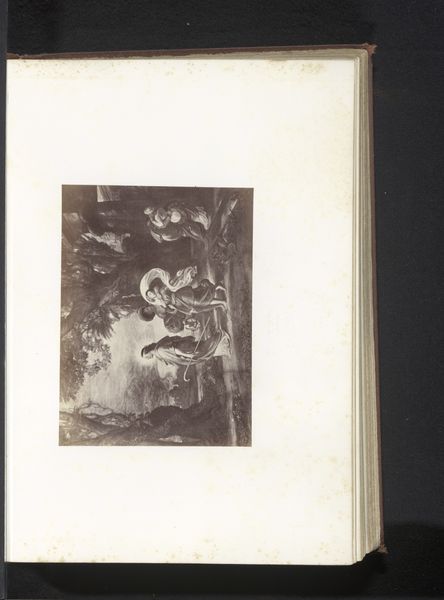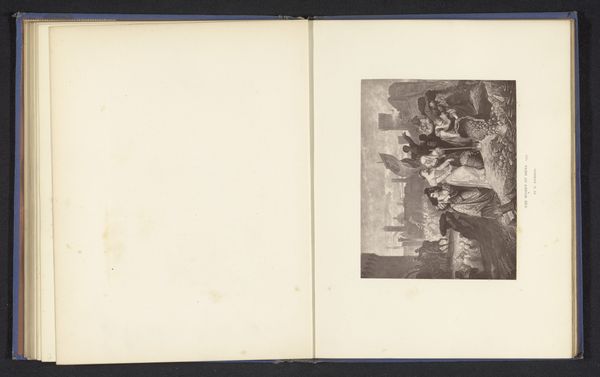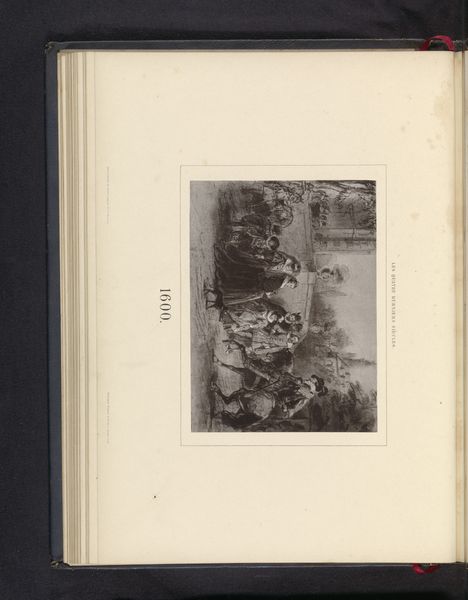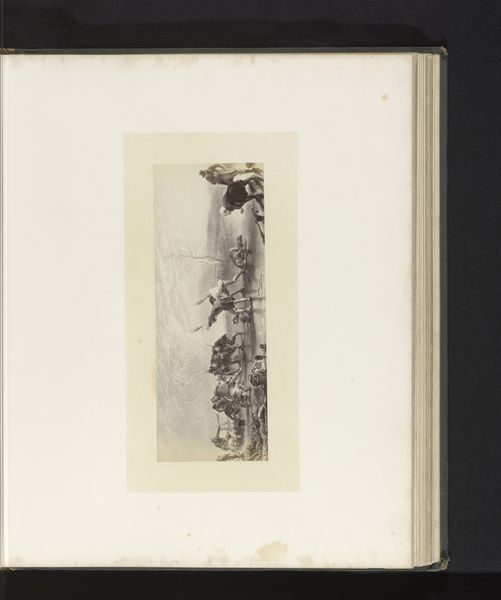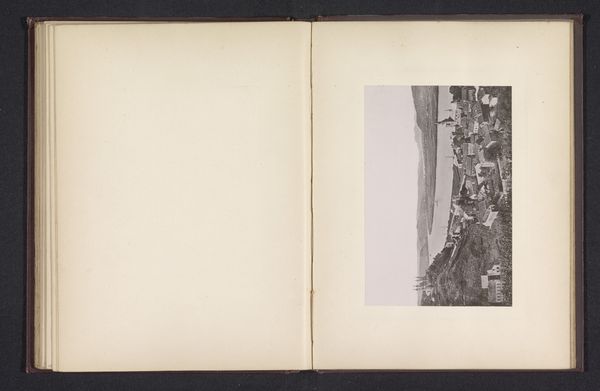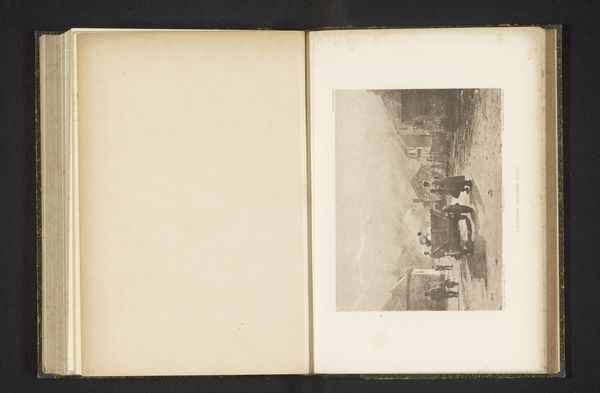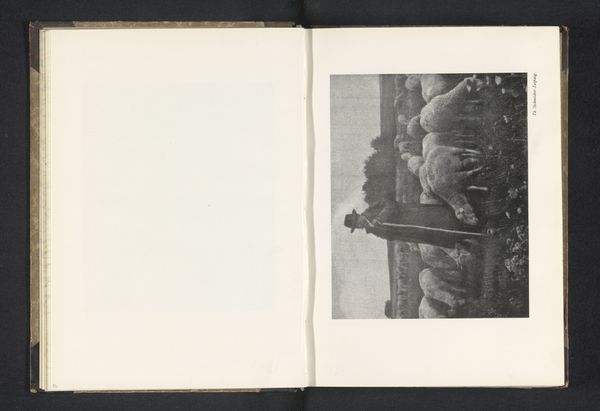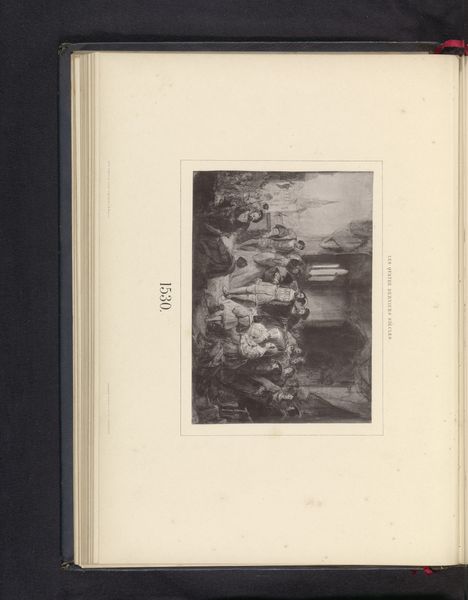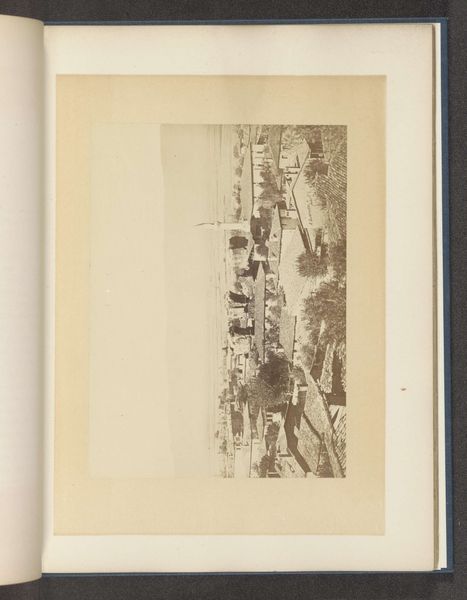
print, photography
# print
#
landscape
#
photography
Dimensions: height 99 mm, width 145 mm
Copyright: Rijks Museum: Open Domain
Curator: Immediately, a hush falls over me. It’s like stumbling upon a forgotten corner of the world, swallowed by mist. Editor: Exactly! We are looking at “Fotoreproductie naar aquarel La forge Roussel door Louise Heger”, a photographic print from before 1884, based on a watercolour by Louise Heger. What visual cues lead to that powerful emotional impact? Curator: For starters, the muted tones evoke a real sense of nostalgia, a longing for simpler times when landscapes reigned supreme. Notice how the architectural features – the forge, nestled in what appears to be a valley – integrate into the scenery almost seamlessly. Editor: Right! This composition speaks of refuge and retreat; buildings become one with the hillside. You have the implicit safety associated with valleys mirrored with the image of architecture nestled within. Even with photography, there’s that intentional watercolor quality in the reproduction. It’s less about exact replication and more about the felt impression. Curator: Absolutely! There's this dream-like quality – as if reality itself is a bit faded, more imagined than concrete. The human element is hinted at but largely absent, suggesting contemplation and withdrawal. Perhaps a space for thought or respite? Editor: Considering Heger's choice to adapt a watercolour into this print, and considering the title's focus on 'La forge Roussel', one begins to read the symbolism attached to 'forges'. In almost every culture, from the Nordic countries to classical Greece, to medieval Europe, forges and metal-working represents both creation and destruction, as well as the raw masculine energies. Its nestling into the hill suggests the controlling and civilising of these chaotic energies? Curator: It's compelling to consider how Louise Heger's vision encapsulates not just a landscape, but also a poignant chapter in her story— perhaps reflecting her longing for peace or the beauty found amidst industry. I feel myself questioning, what does ‘place’ mean to our emotional core? Editor: Yes, Louise Heger invites us to remember how deeply visual impressions—memories distilled and translated into images—can shape our internal world. This piece isn't merely seen; it’s felt.
Comments
No comments
Be the first to comment and join the conversation on the ultimate creative platform.
